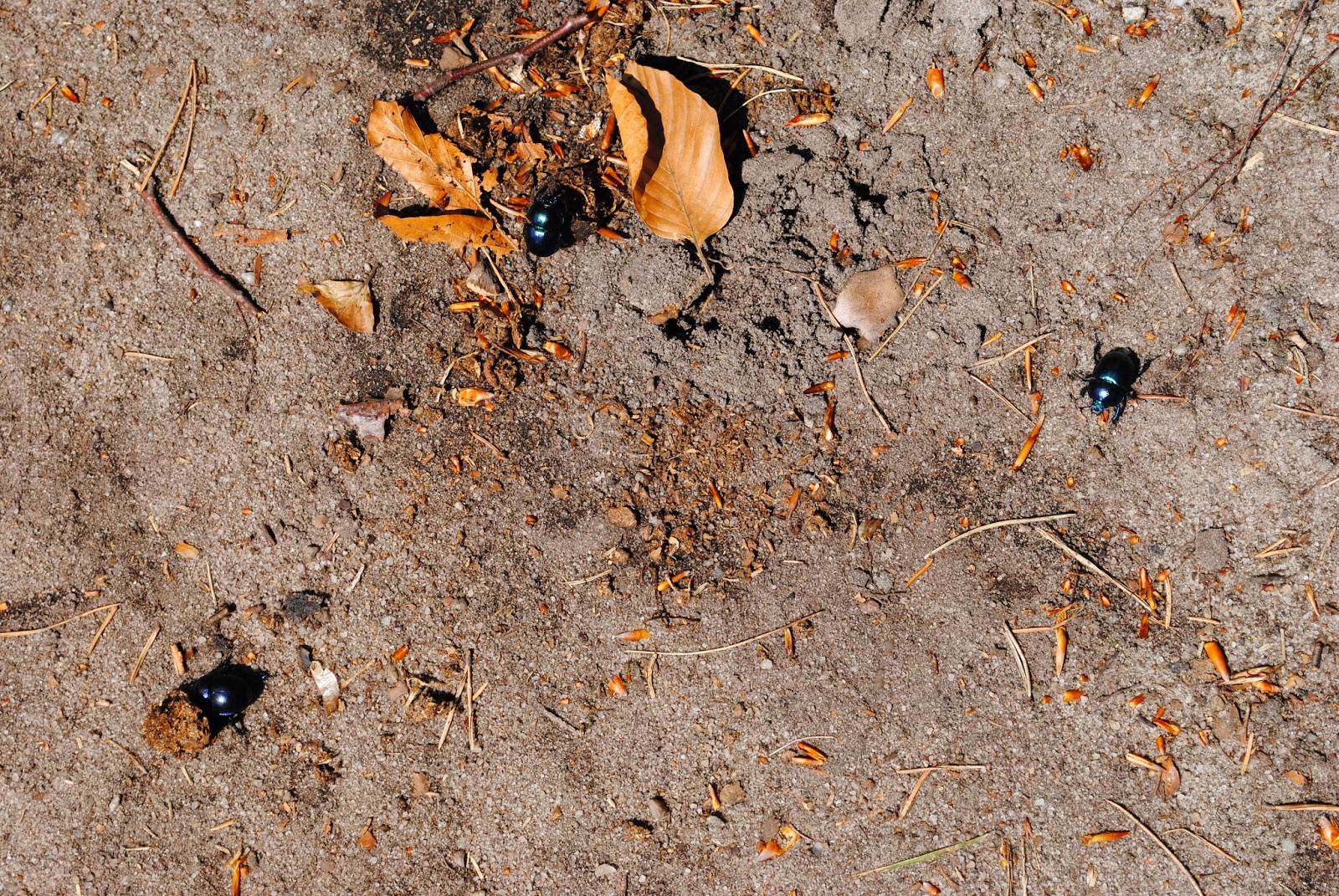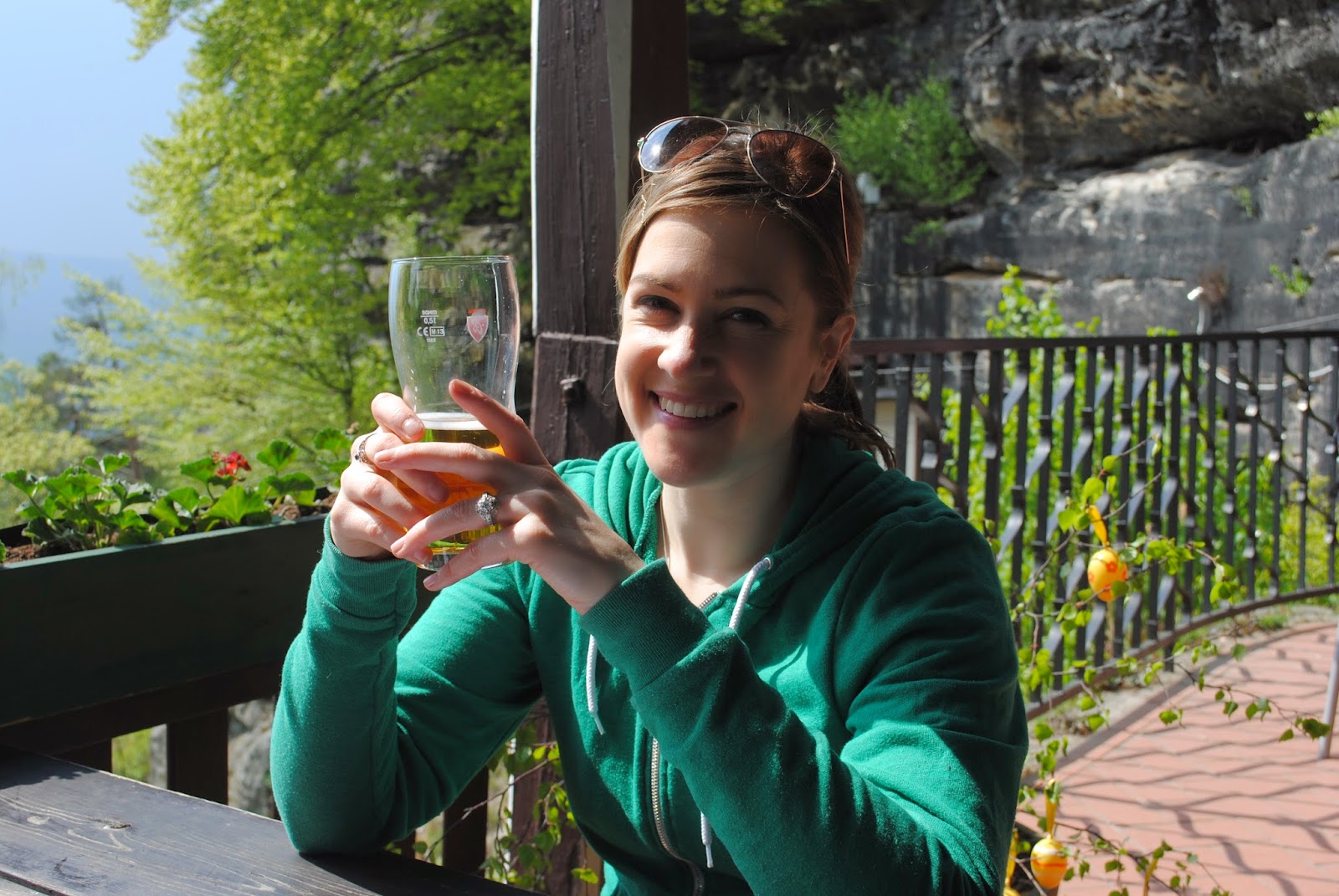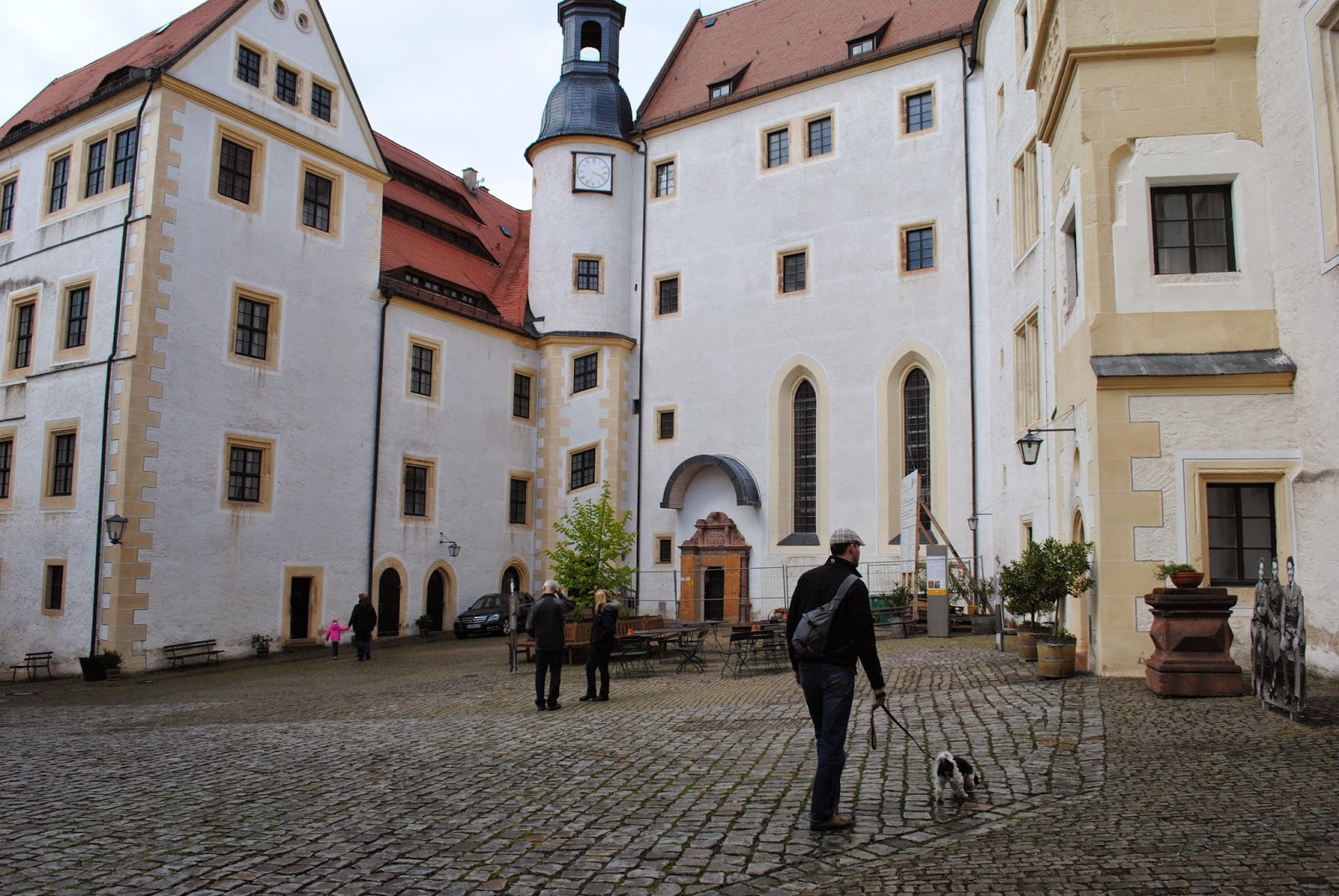Follow the orange backpack for a short hike through the woods...
 |
| Ye old monastery-converted-to-a-hotel |
 |
| The view from our rustic little room |
 |
| J-dog, queen of the lumber |
 |
| Setting off |
 |
| Higher and higher and higher |
 |
| Blue-black beetles; made me think of "Moonrise Kingdom" |
 |
| Fun sandstone |
 |
| J-dog maneuvered 'round the labyrinth quite well |
 |
| Swallowed by rocks |
 |
| Reached our destination.... |
 |
| ...Pravčická brána, the largest natural rock arch on the continent! |
BEER:
Not much to report on this front, other than we cooled our heels with a cold one at the end of the hike. Budvar was the nectar on offer. Fun fact: Budvar was the original Budweiser, which Anheuser Busch nicked, thus resulting in multiple lawsuits across the pond. Now, Budvar is called Czechvar in America, while the American Budweiser is only allowed to be called Bud in Europe. Whew!
 |
| This joint is nestled next to the rock bridge |
 |
| La vista hermosa |
 |
| An apt trophy |
 |
| More view |
HISTORY:
We made a spur-of-the-moment stop at Terezín on the way home. It's a military fortress-turned-concentration camp that's now a dusty little town, and we would have spent more time there had the rental car not needed to be returned in a couple of hours. We just didn't give it the time it deserved.
Terezín is unique because the Nazis used it as a "model" camp; they made it look like a small city by planting flowers and putting up dummy stores when the Red Cross came to visit in 1943. However, in reality it was overcrowded, starved and disease-ridden. About 33,000 of the almost 200,000 people who passed through its gates perished there. The majority of the rest were shipped East to extermination camps like Auschwitz. Of the 15,000 children who were at Terezín, only 132 were known to have survived, according to the Jewish Virtual Library.
We couldn't take pictures inside any of the buildings at the concentration camp - understandably so. But the museum spaces had elaborate exhibits on art created by children in the camp and the conditions of the "dormitories." Heart-wrenching.
 |
| The railroad tracks are still there |
 |
| A structure where prisoners' ashes were stored |
 |
| The cemetery |
 |
| Outside of the crematorium |
 |
| Old garrison ramparts that ended up being used for things like target practice - with live targets |





































